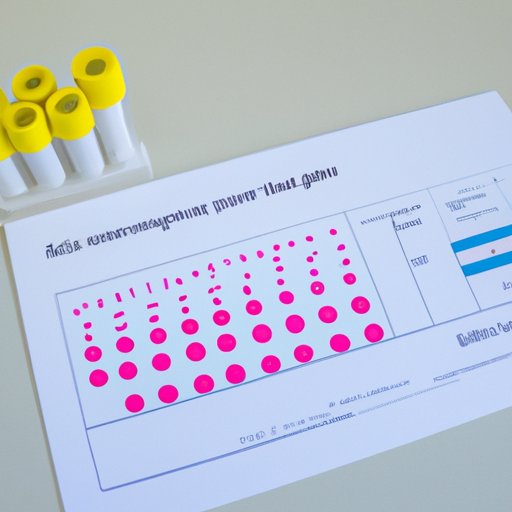Introduction
Antigen testing is a type of diagnostic test that is used to detect the presence of antigens in the body. An antigen is any substance that elicits an immune response from the body, such as a virus or bacteria. The purpose of this article is to explore how antigen testing works, from the science behind it to the different types of tests available and the accuracy and limitations of the tests.

Explaining the Science Behind Antigen Testing
Before delving into the specifics of how an antigen test works, it is important to understand what an antigen actually is. According to the National Institutes of Health (NIH), “An antigen is any substance that causes your immune system to produce antibodies against it.” These antibodies bind to the antigens and help the body fight off infections.
Now that we have a basic understanding of what an antigen is, let’s take a look at how an antigen test works. Antigen tests detect the presence of antigens in the body by looking for proteins that are found on the surface of certain viruses and bacteria. When these proteins are detected, it means that the person being tested has been exposed to the virus or bacteria and may be infected.

Examining How Antigen Tests Differ from Other Diagnostic Tests
Antigen tests differ from other diagnostic tests, such as polymerase chain reaction (PCR) tests and serology tests. PCR tests look for genetic material from viruses or bacteria, while serology tests measure antibodies that have been produced as a result of an infection. Antigen tests, on the other hand, detect the presence of antigens, which are proteins found on the surface of certain viruses and bacteria.
According to a study published in the journal Clinical Microbiology Reviews, “The use of antigen tests for diagnosis of respiratory infections has gained popularity due to their rapid turnaround time and ease of use.” This means that antigen tests can provide results more quickly than other types of diagnostic tests, making them an attractive option for medical professionals.

Breaking Down the Steps of an Antigen Test Procedure
An antigen test procedure typically involves three steps: sample collection, lab analysis, and results interpretation. During the sample collection step, a health care provider will collect a sample from the patient, usually a swab of the nose and throat. This sample is then sent to a lab for analysis.
In the lab, the sample is tested for the presence of antigens. If the test is positive, it means that the patient has been exposed to the virus or bacteria and may be infected. The results are then interpreted by the health care provider and the patient is informed of the results.
Investigating the Different Types of Antigen Tests Available
There are several different types of antigen tests available, including rapid antigen tests, saliva-based antigen tests, and nasal swab antigen tests. Rapid antigen tests are the most commonly used and provide results within 15 minutes. Saliva-based antigen tests are less accurate but can be done at home without the need for a health care provider. Nasal swab antigen tests are the most accurate but are also more invasive and require a health care provider to collect the sample.
Discussing the Accuracy and Limitations of Antigen Testing
The accuracy of antigen tests depends on several factors, such as the type of test used and when the sample was collected. According to the Centers for Disease Control and Prevention (CDC), “Rapid antigen tests are generally less sensitive than molecular tests, meaning they are less likely to detect the virus if it is present.” This means that antigen tests may not always give accurate results.
In addition, antigen tests have some limitations. For example, they cannot differentiate between active and past infections. This means that a positive result may indicate that the patient was exposed to the virus in the past, but does not necessarily mean that they are currently infected.
Conclusion
Antigen testing is a type of diagnostic test that is used to detect the presence of antigens in the body. This article has provided a comprehensive overview of antigen testing, including an explanation of the science behind it, comparison to other diagnostic tests, steps of the test procedure, types of antigen tests available, accuracy and limitations. It is important to understand the science behind antigen testing, as well as its advantages and disadvantages, in order to make an informed decision about whether or not to get tested.
(Note: Is this article not meeting your expectations? Do you have knowledge or insights to share? Unlock new opportunities and expand your reach by joining our authors team. Click Registration to join us and share your expertise with our readers.)
